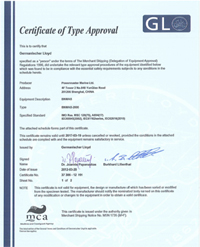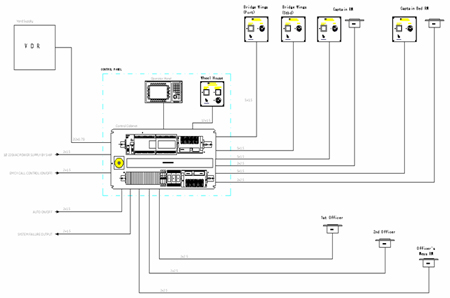

Bridge Navigation Watch Alarm Systems (BNWAS)
|
 |
To provide shipowners with compliance to the latest carriage requirements for Bridge Navigation Watch Alarm Systems (BNWAS), Powermaster marine announces the release of it's latest Bridgewatchkeeper product. Offering full supply and installation services for newbuild and retrofit projects, Powermaster marine will ensure full compliance with the new IMO regulations.
BNWAS is required to be installed on all new vessels with the keel laid on or after July 1st 2011. All existing vessels will be required to retrofit the system at the first survey after the dates outlined in the regulations; all exisiting passenger vessels and cargo vessels over 3000GRT by July 1st 2012, existing cargo vessels above 500GRT to 3000GRT by July 1st 2013, and all existing cargo vessels above 150GRT to 500GRT by July 1st 2014.
Shipowners should be aware that the first survey may not happen at the same time as a dry docking and that as such owners should note thatconsiderable work might be required for retrofitting a BNWAS which could take a vessel out of service.
As such consideration should be given to fitting the system at their vessels' next dry docking ahead of the mandatory implementation dates and not wait for annual surveys within the compliance window.
Powermaster marine has the product and the manpower skills to implement the installations as quickly and smoothly as possible.
Specifications Main supply voltage: 220VAC,50Hz/60Hz
|
Main standards MSC.128(75)-Performance standards for a bridge navigational watch alarm system(BNWAS) |
|
Features Sunlight viewable LCD |
System components Alarm & control panel control cabinet (can be installed into operation-consoles). Alarm acoustic signals buzzers Alarm Panel Reset Panels Some other additional components |
|
Operational modes Automatic (Automatically brought into operation whenever the ship’s heading or track control system is activated and inhibited when this system is not activated) |
System failure alarms and indications If a system failure (PLC failure and HMI panel failure) or power supply failure to the BNWAS is detected, this should be indicated and extend by external interface. |
|
Reset functions It should not be possible to initiate the reset function or cancel any audible alarm from any device, equipment or system not physically located in areas of the bridge providing proper look out. |
Emergency call On the bridge to immediately activate the second, and subsequently third, stage remote audible alarms by an ‘Emergency Call’ push button. |
|
Communication interfaces Additionally, the BNWAS shall provide an interface according to IEC 61162-1, ALR sentence. |
Security Selecting the Operational Mode and the duration of the Dormant Period (Td) be security protected so that access to these controls should be restricted to the Master only. |
|
Alarms & indications functions Visual indication (Once operational, the alarm system should remain dormant for a period of between 3 and 12 min (Td). At the end of this dormant period, the alarm system should initiate a visual indication on the bridge.) Third stage alarm (If not reset, the BNWAS should additionally sound a third stage remote audible alarm at the locations of further crew members capable of taking corrective actions 90 s after the second stage remote audible alarm is initiated. In larger vessels, the delay between the second and third stage alarms may be set to a longer value on installation, up to a maximum of 3 min, to allow sufficient time for the back-up officer and/or Master to reach the bridge.) |
||






